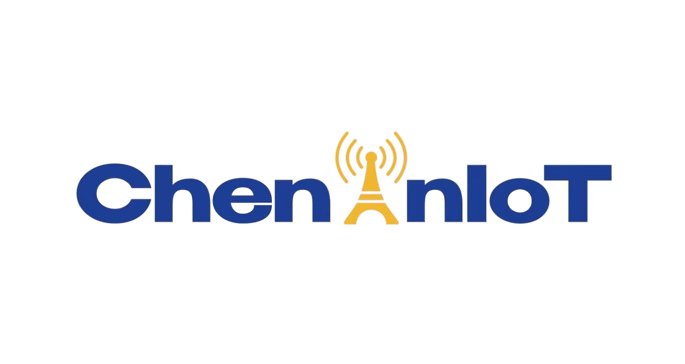The Rise of AIoT and the Challenge of Increasing Household Electricity Consumption
Introduction
With the rapid advancement of artificial intelligence (AI) and the Internet of Things (IoT), the AIoT era has dawned upon us. The proliferation of smart home devices has brought unprecedented convenience and comfort to our lives. However, this surge in smart devices has also led to a significant increase in household electricity consumption, raising concerns about energy consumption and environmental protection. Striking a balance between enjoying a smart lifestyle and reducing household electricity consumption is a pressing challenge.

I.Factors Contributing to Increased Household Electricity Consumption in the AIoT Era
-
-
Widespread Adoption of Smart Devices:
The proliferation of smart home devices, from smart bulbs and sockets to smart appliances like air conditioners and refrigerators, has increased our reliance on electricity.
Demand for Data Centers:
The massive amount of data generated by AIoT devices requires powerful data centers for storage and processing, which consume substantial amounts of electricity.
Changes in Consumer Habits:
The use of smart home devices has altered our electricity consumption patterns. For instance, smart thermostats automatically adjust temperatures, and smart lighting adapts to occupancy, leading to increased overall energy usage.
-
II.Strategies to Reduce Household Electricity Consumption
-
Choosing Energy-Efficient Smart Devices
- Energy Efficiency Labels:Prioritize devices with high energy efficiency ratings.
- Low Standby Power:Opt for devices with low standby power consumption.
- Smart Plugs:Use smart plugs to remotely control device power and manage energy usage.
-
Optimizing Electricity Usage Habits
- Peak Load Shifting:Schedule energy-intensive tasks like laundry and dishwashing during off-peak hours.
- Temperature Control:Set reasonable thermostat temperatures to balance comfort and energy efficiency.
- Maximize Natural Light and Ventilation:Make the most of natural light for illumination and open windows for ventilation to reduce air conditioning use.
- Power Down:Develop the habit of turning off lights and appliances when not in use.
-
Solar Energy and Other Renewable Energy Sources
- Rooftop Solar:If conditions permit, install solar panels on your roof to generate your own electricity and reduce reliance on the grid.
- Energy Storage:Use energy storage systems to store excess solar power for later use.
-
Regular Maintenance
- Air Filter Maintenance: Regularly clean air conditioner filters to improve efficiency.
- Appliance Maintenance: Regularly inspect and maintain appliances to ensure optimal performance.
-
Integration of Smart Home Ecosystems
- Cross-Brand Compatibility:Integrate smart devices from different brands into a unified platform for better control.
- Voice Control:Use voice assistants to control devices and automate tasks.
-
Data Analytics and Optimization
- Data-Driven Insights:Utilize data analytics to understand household energy consumption patterns and identify areas for improvement.
- Continuous Optimization: Continuously adjust energy usage habits and device settings based on data-driven insights.
III. Global Experiences in Smart Home Energy Efficiency
-
Germany:
Known for its rigorous standards and systematic energy efficiency programs, Germany has integrated smart home systems with renewable energy sources like heat pumps and solar power.
-
United States:
The US has a diverse smart home market with a strong focus on innovation. Regional differences in climate and energy resources have led to varied approaches to energy efficiency.
-
Japan:
Japan’s focus on small spaces and high efficiency has driven the development of compact and energy-efficient smart home devices.
China:
With a vast market and strong government support, China is rapidly expanding its smart home industry and implementing various energy-saving measures.
IV.Key Takeaways and Future Directions
-
Policy Support:
Governments play a crucial role in promoting energy efficiency through policies and incentives.
-
Technological Innovation:
Continuous development of energy-efficient technologies is essential.
-
Market Development:
Fostering a healthy smart home market encourages innovation and competition.
-
User Education:
Educating consumers about energy efficiency is vital for widespread adoption.
-
International Cooperation:
Global collaboration can accelerate the development and deployment of energy-efficient smart home technologies.
Conclusion
While the AIoT era brings numerous benefits, it also presents the challenge of increasing energy consumption. By adopting smart energy management strategies, choosing energy-efficient devices, and optimizing energy usage habits, we can create greener homes and contribute to a more sustainable future. Governments, industries, and individuals must work together to promote energy efficiency and harness the potential of smart technology for a better tomorrow.
Share this:
- Click to share on Facebook (Opens in new window) Facebook
- Click to share on X (Opens in new window) X
- Click to share on WhatsApp (Opens in new window) WhatsApp
- Click to email a link to a friend (Opens in new window) Email
- Click to share on Reddit (Opens in new window) Reddit
- Click to share on LinkedIn (Opens in new window) LinkedIn
- Click to share on Pinterest (Opens in new window) Pinterest
- Click to share on Telegram (Opens in new window) Telegram
Related
Discover more from ChenAnIoT
Subscribe to get the latest posts sent to your email.




